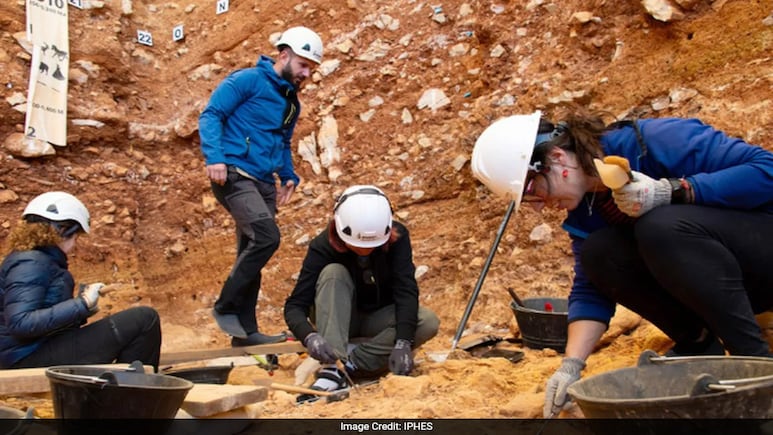
- Spanish archaeologists found evidence of child cannibalism 850,000 years ago at Gran Dolina cave
- A child's neck bone aged 2-4 years showed precise butchery marks suggesting decapitation
- The child belonged to Homo antecessor, a common ancestor of Homo sapiens and Neanderthals
In a remarkable scientific discovery, Spanish archaeologists have found evidence that human ancestors ate children, some 850,000 years ago. Digging at the Gran Dolina cave site in Atapuerca, northern Spain, the researchers discovered a human neck bone belonging to a child aged between two and four years old, with clear butchery marks, suggesting that the small children may have been devoured clean.
The team from the Catalan Institute of Human Paleoecology and Social Evolution (IPHES) stated that the site of the marks on the neck bone suggests the youngster was decapitated. Notably, the body parts of the child belong to Homo antecessor, believed to be the last common ancestor of both Homo sapiens and Neanderthals.
"This case is particularly striking, not only because of the child's age, but also due to the precision of the cut marks," said Dr Palmira Saladie, the co-director of the excavation.
"The vertebra presents clear incisions at key anatomical points for disarticulating the head. It is direct evidence that the child was processed like any other prey."
Although cannibalism is well documented in early humans, it is unusual to find evidence of a child being eaten. If the discovery stands verified, it could mark the earliest evidence of the practice found to date.
“What we are documenting now is the continuity of that behaviour: the treatment of the dead was not exceptional, but repeated,” said Ms Saladie.
Also Read | 'I Love India But...': American Woman Reveals Truth About Living In India
Stockier and shorter on average than modern humans, the Homo antecessor lived between 1.2 million and 800,000 years ago. Their brain size was roughly between 1,000 and 1,150 cubic centimetres, which is smaller than the average 1,350 cubic centimetres brain size of people today.
"The new find reinforces the hypothesis that these early humans exploited their congeners as a food resource," the researchers stated.
“Every year we uncover new evidence that forces us to rethink how our ancestors lived, how they died, and how the dead were treated nearly a million years ago.”
Track Latest News Live on NDTV.com and get news updates from India and around the world

